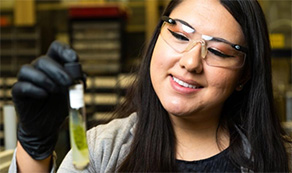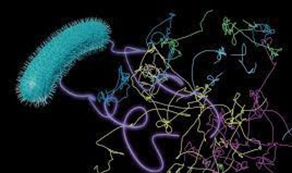Environmental Molecular Sciences Laboratory (EMSL)
EMSL Science Areas

Getting to the root of carbon storage (Image by N. Johnson, Pacific Northwest National Laboratory)
Environmental Transformations and Interactions Area

Mickey Rogers is using mass spectrometry to analyze the chemical composition and morphology of algae in the atmosphere. (Image by Andrea Starr, Pacific Northwest National Laboratory)
Functional and Systems Biology Area

Scientists develop more accurate numerical models of bacterial transport to better understand bacteria’s role in hydrobiogeochemical processes (Image by N. Johnson, Pacific Northwest National Laboratory)



